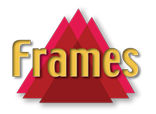
Resource Catalog
Project
- Katja K. FriedrichUniversity of Colorado-Boulder
- Julie K. LundquistUniversity of Colorado-Boulder
Strong and variable winds in thunderstorm outflow boundaries interact with wildland fires, often spreading flames faster to threaten firefighter safety and amplify economical destruction. These boundaries are difficult to detect in complex terrain with operational observing networks, so reliable forecasting is required to protect life and property. One such forecast model, the Weather and Research Forecasting model coupled with a wildland fire-behavior module (WRF-Fire), has exhibited some skill in accurately predicting thunderstorm outflow boundaries in complex terrain, but rigorous validation still needs to be established before WRF-Fire can be relied upon in wildland fires. The overarching goal of the proposed research is the validation of the WRF-Fire models capability to accurately predict the development, movement, and magnitude of thunderstorm outflow boundaries in complex and flat terrain and during wildland fire conditions. The objectives of the proposed research are to: (Obj. 1) Evaluate the ability of WRF-Fire in non-fire conditions to accurately predict the timing, location, and characteristics of thunderstorms and their outflow boundaries and their interactions with the local terrain using state-of-the-art research instruments and operational networks; (Obj. 2) Evaluate forecast skills of WRF-Fire in terms of timing, location, and strength of thunderstorms and resulting outflow boundaries for past wildland fire events in complex terrain; and (Obj. 3) Develop and test ideas and approaches on how to evaluate forecast skills in real-time and how to best communicate outflow boundary characteristics and model uncertainties to the operational fire weather community. The research will combine state-of-the-art numerical modeling using WRF-Fire, currently used by the fire weather community, with operational and state-of-the art observational tools. The proposed research will quantify model skills and uncertainties as a function of atmospheric conditions, terrain, and vegetation type. These model skills and uncertainties can be directly communicated to the fire weather community and model developers. The research outcome will advance our knowledge and understanding of outflow boundary characteristics and their interaction with terrain, wildland fires, vegetation, and ambient atmospheric conditions and will quantify the forecasting skills of WRF-Fire for several types of thunderstorms and their outflow boundaries. The proposed research will also evaluate the utility of research instruments such as microwave radiometers, profiling lidars, profiling sodars, profiling and scanning radars, and radar wind profilers for quantifying outflow boundary characteristics in complex terrain and will develop methods that can be used operationally for real-time model assessment and model uncertainties that can be communicated to the fire weather community.
Cataloging Information
- forecasting
- model validation
- outflow boundary
- thunderstorms
- 17-1-05-2